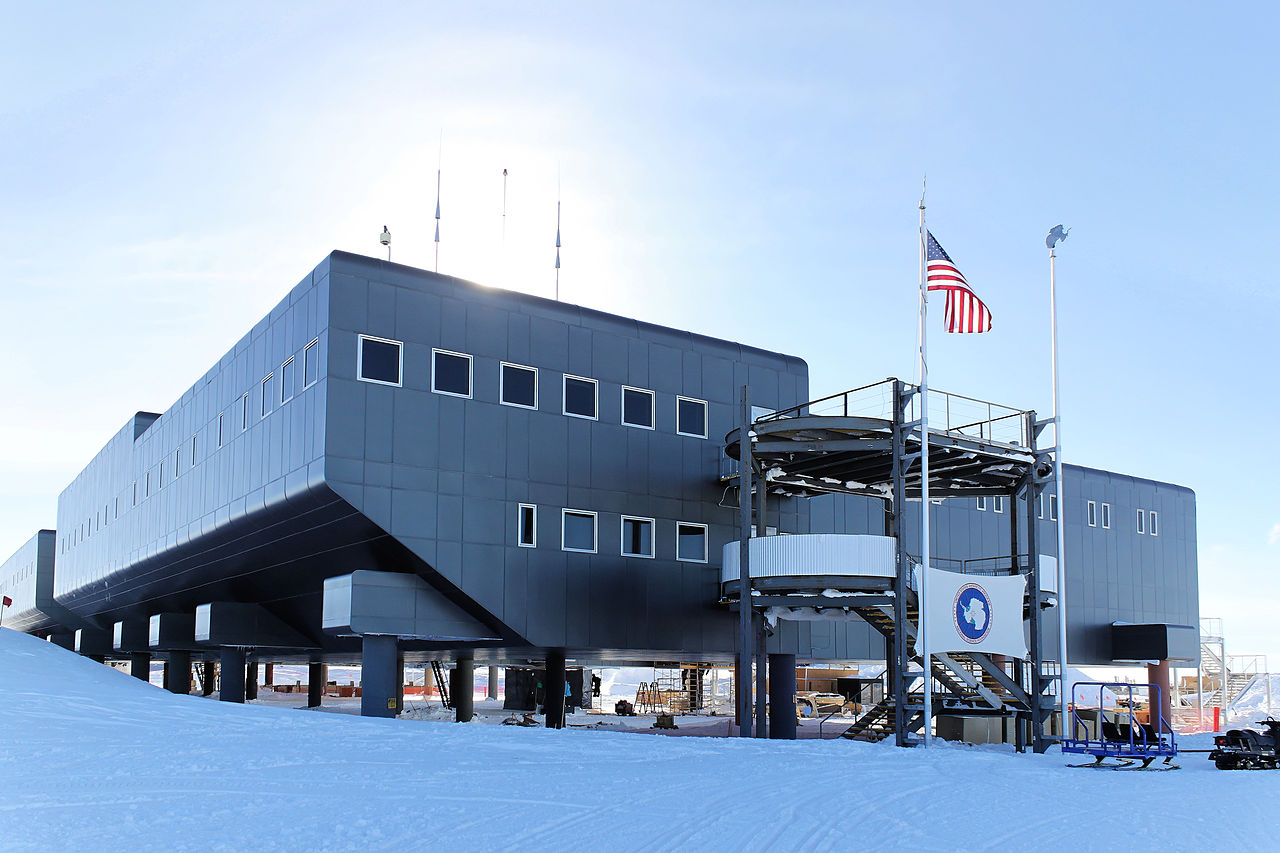Difference between revisions of "Template:POTD protected"
Westarctica (talk | contribs) |
Westarctica (talk | contribs) |
||
| Line 1: | Line 1: | ||
{| role="presentation" style="margin:0 3px 3px; width:100%; text-align:left; background-color:transparent; border-collapse: collapse; " | {| role="presentation" style="margin:0 3px 3px; width:100%; text-align:left; background-color:transparent; border-collapse: collapse; " | ||
|style="padding:0 0.9em 0 0;" | [[File: | |style="padding:0 0.9em 0 0;" | [[File:SouthPoleStationDestinationAlpha.jpg|300px]] | ||
|style="padding:0 6px 0 0"| | |style="padding:0 6px 0 0"| | ||
The '''[[ | The '''[[Amundsen–Scott South Pole Station]]''' is a United States scientific research station at the [[South Pole]], the southernmost place on the Earth. The station is located on the high plateau of [[Antarctica]] at an elevation of 2,835 meters (9,301 feet) above sea level and is administered by the Division of Polar Programs within the National Science Foundation under the United States Antarctic Program (USAP). | ||
The original Amundsen–Scott Station was built by [[United States Navy|Navy]] Seabees for the United States during November 1956, as a part of its commitment to the scientific goals of the International Geophysical Year (IGY), an international effort lasting from January 1957 through June 1958, to study, among other things, the geophysics of the polar regions of Earth. | |||
Before November 1956, there was no permanent human structure at the [[South Pole]], and very little human presence in the interior of Antarctica at all. The few scientific stations in Antarctica were located on and near its seacoast. The station has been continuously occupied since it was built. The Amundsen–Scott Station has been rebuilt, demolished, expanded, and upgraded several times since 1956. | |||
<p><small>Photographer: | <p><small>Photographer: Daniel Leussler</small></p> | ||
[[:Category:Images|'''(More Featured Images)''']] | [[:Category:Images|'''(More Featured Images)''']] | ||
<div class="potd-recent" style="text-align:right;"> | <div class="potd-recent" style="text-align:right;"> | ||
Revision as of 07:34, 31 December 2018

|
The Amundsen–Scott South Pole Station is a United States scientific research station at the South Pole, the southernmost place on the Earth. The station is located on the high plateau of Antarctica at an elevation of 2,835 meters (9,301 feet) above sea level and is administered by the Division of Polar Programs within the National Science Foundation under the United States Antarctic Program (USAP). The original Amundsen–Scott Station was built by Navy Seabees for the United States during November 1956, as a part of its commitment to the scientific goals of the International Geophysical Year (IGY), an international effort lasting from January 1957 through June 1958, to study, among other things, the geophysics of the polar regions of Earth. Before November 1956, there was no permanent human structure at the South Pole, and very little human presence in the interior of Antarctica at all. The few scientific stations in Antarctica were located on and near its seacoast. The station has been continuously occupied since it was built. The Amundsen–Scott Station has been rebuilt, demolished, expanded, and upgraded several times since 1956. Photographer: Daniel Leussler |